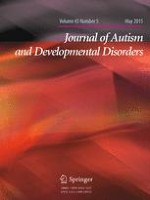01-05-2015 | Original Paper
The Use of Grammatical Morphemes by Mandarin-Speaking Children with High Functioning Autism
Gepubliceerd in: Journal of Autism and Developmental Disorders | Uitgave 5/2015
Log in om toegang te krijgenAbstract
The present study investigated the production of grammatical morphemes by Mandarin-speaking children with high functioning autism. Previous research found that a subgroup of English-speaking children with autism exhibit deficits in the use of grammatical morphemes that mark tense. In order to see whether this impairment in grammatical morphology can be generalised to children with autism from other languages, the present study examined whether or not high-functioning Mandarin-speaking children with autism also exhibit deficits in using grammatical morphemes that mark aspect. The results show that Mandarin-speaking children with autism produced grammatical morphemes significantly less often than age-matched and IQ-matched TD peers as well as MLU-matched TD peers. The implications of these findings for understanding the grammatical abilities of children with autism were discussed.
